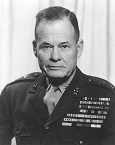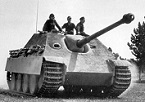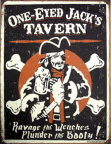John 3rd
Posts: 17178
Joined: 9/8/2005
From: La Salle, Colorado
Status: offline

|
Here is the conventional scenario description of Between the Storms:
Between the Storms
ALTNAV 1922-1941 (Scenario 55: Between the Storms)
Between the Storms has been created to reflect a slightly different outcome of the historic Washington and London Naval Conferences: 1922-1937 and the rise of Adm Yamamoto to Naval Minister in the years leading up to Dec 7th. The Mod splices together the Treaty Mod (Scen 45) and Reluctant Admiral (Scen 50) to create a complete ALTNAV History spanning the two decades between the World Wars (Storms).
The Washington Conference
Charles Evans Hughes blueprint for disarmament gets out and the Japanese stonewall a Naval Conference for a full year. The Conference does take place in 1922 and disarmament is agreed upon, however, there are additions allowed due to the added time to get the meeting going. The whole Mutsu Debate is scrapped due to Mutsu actually being ready and deployed at that point. While maintaining the 5-5-3 ratio between Great Britain, the United States, and Japan, there are several new outcomes:
1. The Japanese then argue to keep either a Tosa or a pair of the Amagi Class battlecruisers. The Americans carry the day in arguing for the Lexington-Class battlecruisers being completed. They gain the Ranger and Constellation (while scrapping BB Mississippi to maintain balance), Great Britain gets the option to build a pair of Super-Hoods (while additionally scrapping Royal Sovereign), and Japan completes Amagi-Class Ishitaka.
2. The whole subject of CVs is reworked:
a. Allow two 'experimental' CVs (two Hosho's and two Langley's)
b. Two BC conversions are allowed but further treaty tonnage is added for one more CVL to be built by both Japan and USA. The Americans build the King’s Mountain (proto-Independence Class) and the Japanese back off the failed Ryujo design to build Ryukaku (a proto-CVL as well).
The London Conference
Moving on to the London Conference (1930) and the subject of Cruisers is re-worked:
1. Japan--at all costs--sticks to its goal of 70% for CAs (instead of 60%). This allows for GB and USA to build two more CAs (USA: Burlington and Rome) while Japan gains one.
2. Great Britain--who nearly scrapped the treaty due to the issue of CAs and CLs--stands firm over its argument and forces a larger tonnage for CLs. USA adds USS Anchorage and Dallas.
3. Both Japan and the United States were looking at hybrid Cruiser—CVs and they force Great Britain, following the example set with the Washington BC—CV Conversions, to allow for two hybrids each in the early-30s. USA builds CLV Charlotte and Jacksonville, GB builds CAV Melbourne and Wellington (sold/given to those respective navies), and Japan finishes up with CAV Kushiro and Tokachi.
***It should be noted that to take maximum advantage of the revised Treaty tonnages, Japan converts several of the oldest CLs into fast ML, builds additional Myoko-Class CAs and keeps the Mogami Class as 6” CLs.
As the treaty changes play out, the rise of Admiral Yamamoto Isoroku occurs. In this alternate history, Yamamoto exerted a much greater influence first on the Japan Naval Aircraft Industry, then as Deputy Navy Minister, and finally as Navy Minister itself. Yamamoto chooses, at great risk to his life, to forego command of the Combined Fleet and dedicate himself to preparing Japan for a war he didn't want.
He adds two new slipways for Fleet construction to facilitate a different, final pre-war expansion of the Kaigun. New and expanded Naval Yards, Heavy Industry, and Armaments are added at tremendous cost for the Japanese economy as the Admiral attempts to prepare Japan for a possibly long war.
In so choosing to do this Yamamoto then changes the 4th Circle Building plan replacing the 3rd and 4th Yamato-Class Battleships with improved Shokaku-Class CVs and a pair of Kawachi-Class fast Battlecruisers, four sligthly improved CAs, an accelerated Light Cruiser deployment, and additional destroyers. Quick, reasonably cheap carrier conversions are moved forward seeing all of the pre-war CVs/CVLs deploy by December 7th or at slightly earlier dates in 1942. Though only a few of these new ships are ready on December 7th, these additions shall make the Kaigun a force to be reckoned with well into 1944.
The Japan Naval Air Arm is changed so that everything is staked to the Zero Airframe with a specialization of the Zero into a Land-Based Interceptor as well as CV-Based Fighters. Research and production expansion is achieved by streamlining the air industry (cutting several models) while bringing forward second generation aircraft: Judy, Jill, Rita, etc…by great effort the IJNAF deploys nearly all new aircraft on December 7th.
On the ground Yamamoto reorganizes the SNLF units into a Brigade-Sized offensive force and—knowing it will be a war of attrition—converts many Naval Guard into enhanced units with Coastal Defense artillery (using guns taken from refitted warships) for a stronger defensive unit. Additional small units are added to the IJN’s Troops and support units better reflecting Yamamoto's foresight into base building, defense, and expansion needs. While all these units are small and not in great number they promise to help the Japanese war effort.
The foresight of the Admiral pays off during late-1942 and 1943 as new ships, aircraft, and ground units enter into the Japanese Order-of-Battle, however, the cost is steep. Though expanded and using modern aircraft many Japanese Naval Air units start with their experience lowered to reflect the dilution of the experienced pilots into new units that start in Japan or arrive during 1942-1943.
Supply and fuel reserves start at a much reduced state. The Japanese MUST take the DEI as fast as possible!
Once war begins Yamamoto’s influence upon the wartime Kaigun continues to be felt. Several more Shokaku CVs are ordered as well as another pair of CAs, and the conversion of several CLs into CVLs. First class destroyers are accelerated and emphasis is shifted to the AA Akizuki-Class at the expense of the more balanced Yugumo’s. Manpower is at a premium within the Fleet so Submarines, Escorts, and ASW forces all see a major retooling reflecting the Japanese quality over quantity belief. Yamamoto chooses the immediately useful projects, large APs converting to CVEs, better 2nd-class destroyers, fast transports and coastal defense fleet.
This change in the Japanese is not completely hidden from the Allies and, thus, there are major Allied changes as well. The Allies see continued major changes in their starting locations, new air units, the addition of Training Squadrons on mainland USA to allow for an American pilot training program, enhanced aircraft production numbers, several ground units, a French Squadron at Tahiti, additional DDs for Australia, a CLAA conversion for the Omaha-CL, an additional pair of CVLs, and optional conversion of the Kittyhawk Class AKV, Tangier Class AV, and Cimarron Class AOs into CVEs. The added warships reflect a ‘stopgap’ counter to the increased Japanese strength found at war’s start.
How well can YOU do to use these new tools OR how well can you stop the Japanese Navy in its tracks as the Allies? As war clouds gather on the horizon, the United States makes several important decisions (1) to slightly reinforce the Asiatic Fleet with an additional CA, CL, and 4 modern DDs, (2) Admiral Hart also decides to follow his inner thoughts and begin development of Cebu as an alternate anchorage, and (3) the Scouting Force, commanded by Vc-Adm Wilson is sent south to protect the Philippine reinforcement TFs in the South Pacific.
NOTE: This Mod uses JuanG's off-map aircraft purchase system for the Allied Player be use political points to buy additional air frames when needed/wanted.
Japan deploys its few new ships to protect the Invasion TFs coming from Babeldoap and Cam Rahn Bay as the Kido Butai steams towards its rendezvous with destiny at Pearl Harbor…
Scenario Designers: Stanislav Bartoshevitch (FatR), Michael Benoit (NY59Giants), John R. Cochran, III (John 3rd), Brian Doctor (Gen Patton), Juan Gomez (JuanG), Ben Kloosterman (BK), John (JWE/Symon), EJ (SuluSea) and John Young (Red Lancer)
_____________________________
|
 Printable Version
Printable Version
















 New Messages
New Messages No New Messages
No New Messages Hot Topic w/ New Messages
Hot Topic w/ New Messages Hot Topic w/o New Messages
Hot Topic w/o New Messages Locked w/ New Messages
Locked w/ New Messages Locked w/o New Messages
Locked w/o New Messages Post New Thread
Post New Thread